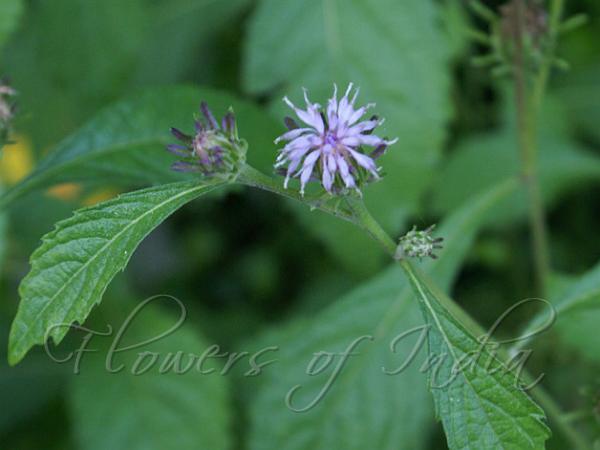|
| Ironweed |
|

|

| File size | 91668 |
| Original date | 10/20/09 6:09 PM |
| Resolution | 628 x 471 |
| Flash | Flash did not fire, auto |
| Focal length | 50.0mm |
| Exposure time | 1/20s |
| Aperture | 5.6 |
| Focus Distance | |
| Metering Mode | Multi-segment |
| Camera make | SONY |
| Camera model | DSLR-A100 |
| Sensor type |
|
|
|
|
Photo: |
Botanical name: Baccharoides anthelmintica Family: Asteraceae (Sunflower family)
Synonyms: Conyza anthelmintica, Vernonia anthelmintica
Synonyms: Conyza anthelmintica, Vernonia anthelmintica
Ironweed is large annual hern 60-100 cm tall. Stem is robust, erect, leafy
with velvety branches. Alternately arranged leaves, 5-8 cm long, are
obovate to lanceshaped, with base narrowing into the stalk. Flower-heads
are borne at the end of branches in 10-20 cm clusters. Flowers are
tubular, 5-lobed. Seed pods are 4-6 cm long, 10 ribbed, oblong.
Flowering: October-January.
Medicinal uses: The seeds of Ironweed are of great repute in
Sanskrit Materia Medica as a medicine for white leprosy (leuco-derma), and
other skin diseases. It is mentioned also as an anthelmintic, but is not
much used as such, except in combination with a number of other medicines.
The seeds of Ironweed are of great repute in
Sanskrit Materia Medica as a medicine for white leprosy (leuco-derma), and
other skin diseases. It is mentioned also as an anthelmintic, but is not
much used as such, except in combination with a number of other medicines.
Medicinal uses:
 The seeds of Ironweed are of great repute in
Sanskrit Materia Medica as a medicine for white leprosy (leuco-derma), and
other skin diseases. It is mentioned also as an anthelmintic, but is not
much used as such, except in combination with a number of other medicines.
The seeds of Ironweed are of great repute in
Sanskrit Materia Medica as a medicine for white leprosy (leuco-derma), and
other skin diseases. It is mentioned also as an anthelmintic, but is not
much used as such, except in combination with a number of other medicines. | Identification credit: Gurcharan Singh | Photographed in Mandi, Himachal Pradesh. |
• Is this flower misidentified? If yes,